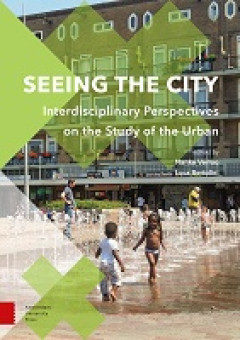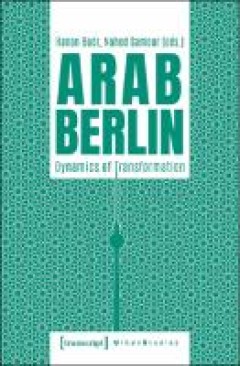Ditapis dengan
E-book London’s Urban Landscape : Another Way of Telling
Substitute the term ‘place’ for the apricot-cocktail glass, and you have the overall theme of this book. It puts forward an account of London’s urban landscape by considering it as a constellation of places linked by paths of movement between them.The aim of this book is to describe these places as faithfully as possible through phenomenological description grounded in partic…
- Edisi
- -
- ISBN/ISSN
- 9781787355583
- Deskripsi Fisik
- 458 hlm
- Judul Seri
- -
- No. Panggil
- 307.76421 JEE l
E-book Security Sector Reform and Citizen Security : Experiences from Urban L…
Security Sector Reform (SSR) is at a crossroads. SSR concepts and practices are embedded in international efforts to promote peace, security and development. They are widely considered an essential element of many multilateral and bilateral stabilization efforts and are a standard feature of the post-conflict toolkit.1 SSR is routinely commended for the way it can integrate siloe…
- Edisi
- -
- ISBN/ISSN
- 9781911529750
- Deskripsi Fisik
- 58 hlm
- Judul Seri
- -
- No. Panggil
- 307.76 MUG s
E-book Integrating Food into Urban Planning
While urbanisation worldwide sets up unprecedented challenges for feeding cities with accessible, affordable food and healthy diets, urban food security and food systems are receiving growing attention at an international level and in a growing number of cities of all sizes. How-ever, the issue of food and urban planning is insufficiently covered in existing literature. How f…
- Edisi
- -
- ISBN/ISSN
- 9781787353763
- Deskripsi Fisik
- 376 hlm
- Judul Seri
- -
- No. Panggil
- 307.76 BAK i
E-book Everyday Streets : Inclusive approaches to understanding and designing…
Everyday streets are both the most used and the most undervalued of cities’ public spaces. They constitute the inclusive backbone of urban life – the chief civic amenity – though they are challenged by optimisation processes. Everyday streets are as profuse, rich and complex as the people who use them; they are …
- Edisi
- -
- ISBN/ISSN
- 9781800084407
- Deskripsi Fisik
- 378 hlm
- Judul Seri
- -
- No. Panggil
- 307.76 ADL e

E-book Seeing the City: Interdisciplinary Perspectives on the Study of the Urban
The city is a complex object. Some researchers look at its shape, others at its people, animals, ecology, policy, infrastructures, buildings, history, art, or technical networks. Some researchers analyse processes of in- or exclusion, gentrification, or social mobility; others biological evolution, traffic flows, or spatial development. Many combine these topics or add still more topics beyond …
- Edisi
- -
- ISBN/ISSN
- 9789463728942
- Deskripsi Fisik
- 291 halaman
- Judul Seri
- -
- No. Panggil
- 307.76 VER s
E-book Seeing the City Digitally : Processing Urban Space and Time
This book explores what’s happening to ways of seeing urban spaces in the contemporary moment, when so many of the technologies through which cities are visualized are digital. It is by no means comprehensive. Its chapters all explore specif ic examples of different kinds of digital technologies and examine different sorts of images in different cities: many other technologies, images and cit…
- Edisi
- -
- ISBN/ISSN
- 9789463727037
- Deskripsi Fisik
- 294 hlm
- Judul Seri
- -
- No. Panggil
- 307.76 ROS s

E-book The Places Where Community Is Practiced : How Store Owners and Their B…
The idea behind this book has a long history. It was inspired less by my academic work than by my family life and side jobs. It is the result of living in and moving between urban and rural neighborhoods as a child, teenager, and student. Growing up in the 1980s, my family lived in inner-city Munich; like most families there, we lived in a small apartment. Gentrification has a much longer histo…
- Edisi
- -
- ISBN/ISSN
- 9783658253936
- Deskripsi Fisik
- -
- Judul Seri
- -
- No. Panggil
- 307.76 STE t
E-book Equality in the City : Imaginaries of the Smart Future
Equality in the city is an aspiration. Cities have never been equal, equitable or fair. Now, optimum efficiency is celebrated as progress, and reconfigurations of urban spaces are focused on the clean lines of punctual service delivery. Smart cites are controlled cities, where data is the fuel that pumps through the heart. The common denominator in smart city rhetoric is the assumption that org…
- Edisi
- -
- ISBN/ISSN
- 9781789384659
- Deskripsi Fisik
- 288 hlm
- Judul Seri
- -
- No. Panggil
- 307.76 CAL e

E-Book Arab Berlin: Dynamics of Transformation
Berlin is increasingly emerging as a hub of Arab intellectual life in Europe. In this first study of Arab culture to zoom in on the thriving metropolis, the contributors shed light on the dynamics of transformation with Arabs as agents, subjects, and objects of change in the spheres of politics, society and history, gender, demographics and migration, media and culture, and education and resear…
- Edisi
- -
- ISBN/ISSN
- 9783839462638
- Deskripsi Fisik
- 342 halaman
- Judul Seri
- -
- No. Panggil
- 307.76 BAD a

E-Book Cities and Local Governments in Central Asia: Administrative, Fiscal, …
This book presents the changing roles of urban governments and how local governments struggle to gain administrative, fiscal, and political power to combat current urban challenges in Kazakhstan. Focusing on the cities and regions selected by the national government of Kazakhstan to be the drivers of national economic development, the author analyses the impact of decentralization on the role o…
- Edisi
- -
- ISBN/ISSN
- 9780429298752
- Deskripsi Fisik
- 147 halaman
- Judul Seri
- -
- No. Panggil
- 307.76 JUN c
E-book Reimagining Urban Nature : Literary Imaginaries for Posthuman Cities
We, entangled humans and nonhumans, are at a critical point in managing environmental degradation, with human-induced environ-mental change occurring on a grand scale. Several environmental problems need urgent attention, including climate change, the sixth great extinction of plants and other animals, and increasing resource depletion in some of the most vuln…
- Edisi
- -
- ISBN/ISSN
- 9781802079081
- Deskripsi Fisik
- 280 hlm
- Judul Seri
- -
- No. Panggil
- 307.76 BOR r
 Karya Umum
Karya Umum  Filsafat
Filsafat  Agama
Agama  Ilmu-ilmu Sosial
Ilmu-ilmu Sosial  Bahasa
Bahasa  Ilmu-ilmu Murni
Ilmu-ilmu Murni  Ilmu-ilmu Terapan
Ilmu-ilmu Terapan  Kesenian, Hiburan, dan Olahraga
Kesenian, Hiburan, dan Olahraga  Kesusastraan
Kesusastraan  Geografi dan Sejarah
Geografi dan Sejarah